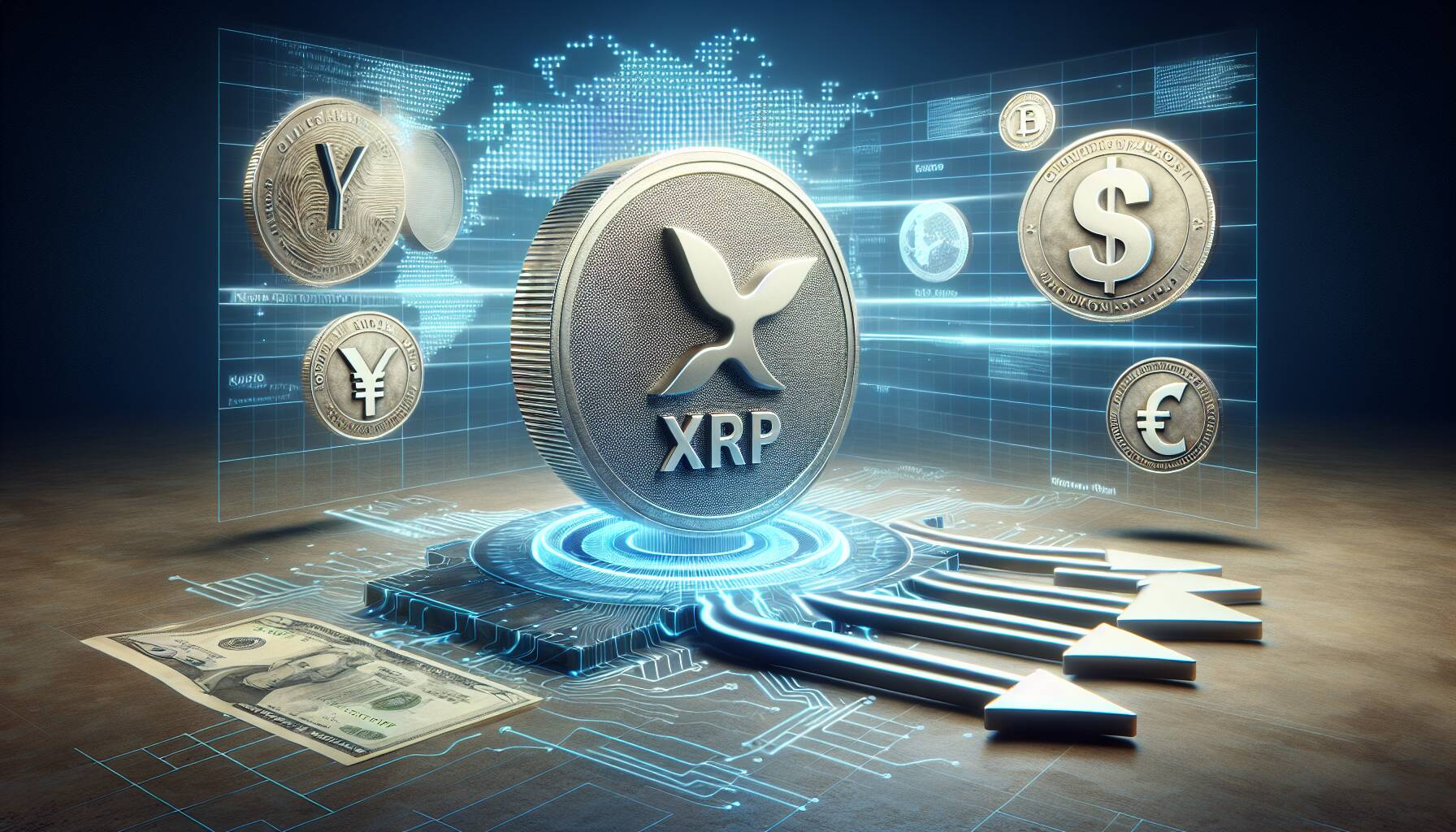SINGAPORE — In a bold forecast for the future of cross-border payments, Ripple CEO Brad Garlinghouse envisions a significant role for XRP, predicting that the cryptocurrency could capture 14% of the transaction volume currently processed by SWIFT within the next five years. His statements, made during the XRP APEX 2025 event in Singapore, highlight XRP’s potential utility in the international funds transfer landscape.
Garlinghouse emphasized that the current SWIFT model consists of two primary components: messaging and liquidity. He noted, “Liquidity is owned by the banks. I think less about the messaging and more about liquidity. If you’re driving all the liquidity, it is good for XRP … so I’ll say five years, 14%.” This pivot focuses on the critical aspect of how funds are moved rather than just the messages that signal those transactions.
For context, SWIFT has long been the backbone of interbank communication for cross-border payments, coordinating where funds should travel. However, the actual movement of money often involves a complex web of intermediaries, leading to delays and higher costs. Ripple aims to disrupt this model by offering a solution that combines both messaging and the real-time transfer of funds through its innovative blockchain technology, thereby improving efficiency and reducing costs.
“Instead of just sending a message, Ripple’s system moves both the message and the money,” Garlinghouse explained.
XRP serves as a bridge currency, allowing for instant conversion between different currencies, which could significantly ease the burden on banks that need to maintain funds in foreign accounts. As Ripple positions itself at the intersection of technology and finance, the competition with traditional systems like SWIFT could redefine the future of international payments.

XRP’s Future in Cross-Border Payments
The following key points outline the potential impact of XRP on the future of international money transfers:
- XRP’s Market Potential: Ripple CEO Brad Garlinghouse predicts that XRP could capture 14% of SWIFT’s cross-border payment volume within five years.
- Focus on Liquidity: Garlinghouse emphasizes the importance of liquidity over messaging, suggesting that XRP’s role will primarily be in facilitating cross-border transactions.
- Current SWIFT Limitations: SWIFT currently handles messaging for international transfers but does not move actual funds, leading to slower and more costly transactions.
- Ripple’s Competitive Edge: Ripple aims to improve the speed and cost-effectiveness of cross-border payments by utilizing blockchain technology to move both messages and money simultaneously.
- XRP as a Bridge Currency: XRP serves as a bridge currency, allowing instant conversions between different currencies and reducing the need for banks to maintain foreign accounts.
These developments could significantly streamline international payments for individuals and businesses, potentially making financial transactions faster and more affordable.
Ripple’s Ambitious Vision for XRP in Cross-Border Payments
Ripple CEO Brad Garlinghouse is making waves in the financial sector with his bold predictions about the future of XRP in cross-border payments. This forecast points to a significant potential shift in the market dynamics currently dominated by SWIFT, a name synonymous with interbank messaging. Garlinghouse’s vision of XRP capturing 14% of SWIFT’s volume within five years highlights a competitive push towards enhancing liquidity in international transactions.
One of the undeniable advantages of Ripple’s approach lies in its innovative use of blockchain technology. Unlike SWIFT, which primarily focuses on messaging rather than capital movement, Ripple’s system integrates both elements, potentially streamlining the process of transferring funds across borders. This improved efficiency could attract banks and financial institutions seeking to lower costs and enhance speed in their transactions. Furthermore, using XRP as a bridge currency not only facilitates quicker currency conversions but also alleviates the need for banks to maintain significant reserves in foreign accounts, a financial burden that many institutions would welcome lifting.
However, not all aspects of this transition are smooth sailing. Ripple’s efforts to disrupt a long-established player like SWIFT may face resistance from traditional banking entities comfortable with existing protocols. These institutions may perceive XRP’s introduction as a threat to their operational model, potentially leading to friction as they grapple with adopting new technologies. Additionally, regulatory uncertainties surrounding cryptocurrencies could stand in the way of Ripple’s expansion, as compliance issues continue to pose challenges within various jurisdictions.
This evolving landscape may prove beneficial for fintech startups and other innovators eager to explore new pathways in finance, as the introduction of XRP and its capabilities could open doors for collaboration and technological integration. However, established banks entrenched in the current system might find themselves at a crossroads, needing to adapt or risk obsolescence in the face of Ripple’s advancing offerings in the blockchain space.

















